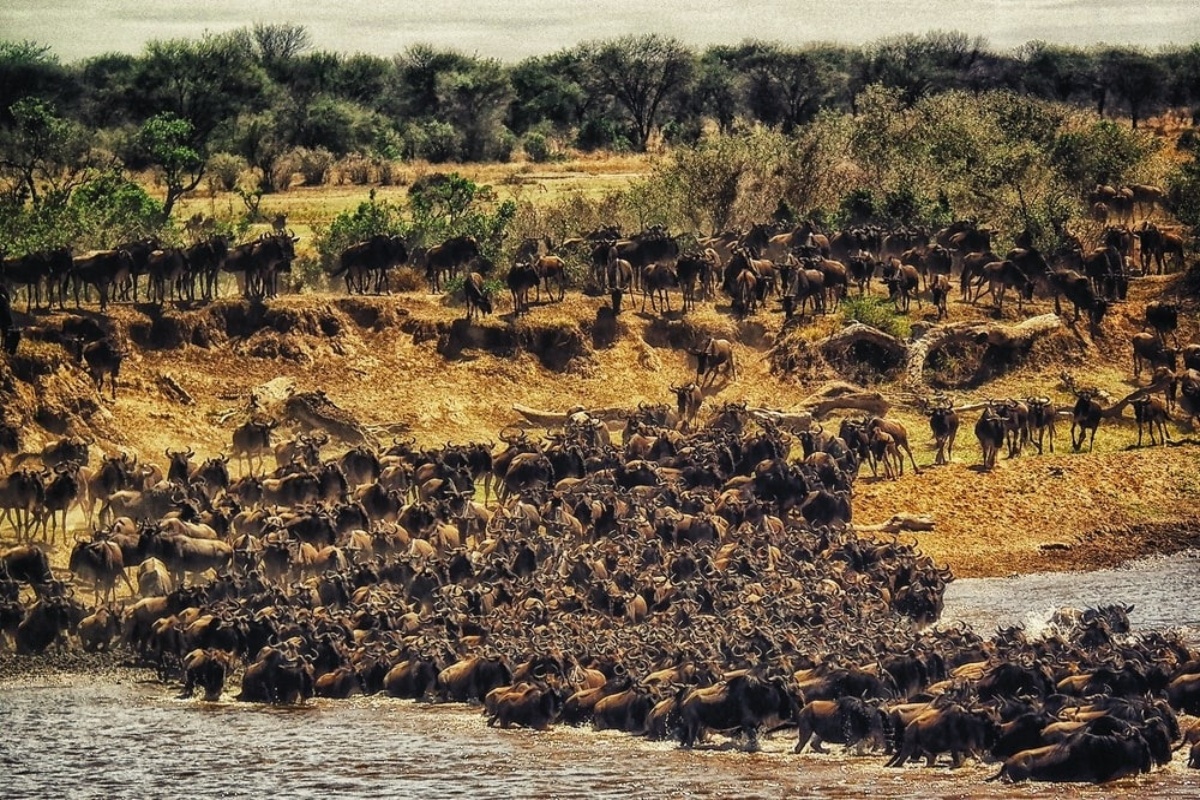An international team of 92 scientists and conservationists has joined forces to create the first-ever global atlas of ungulate (hooved mammal) migrations, working in partnership with the Convention on the Conservation of Migratory Species of Wild Animals (CMS), a UN treaty.
The detailed maps of the seasonal movements of herds worldwide will help governments, indigenous people and local communities, planners, and wildlife managers to identify current and future threats to migrations, and advance conservation measures to sustain them in the face of an expanding human footprint.
Advertisement
The Global Initiative on Ungulate Migration (GIUM) was launched with the publication of a commentary titled “Mapping out a future for ungulate migrations,” in the May 7 issue of the journal Science.
“A global migration atlas is urgently needed because there has never been a worldwide inventory of these phenomenal seasonal movements,” said lead author Matthew Kauffman, a wildlife biologist with the US Geological Survey.
“As landscapes become more difficult to traverse, the maps can help conservationists pinpoint threats, identify stakeholders, and work together to find solutions.”
Year after year, migratory ungulates must pound their hooves across vast areas of the planet to find food, escape harsh conditions, and breed. The movements are as diverse as the species themselves, which include Mongolian Gazelles and Saiga in Asia, wildebeest in the Serengeti, Guanacos in South America, Arctic Caribou and wild Reindeer, Mule Deer and Elk in North America, Red Deer in Europe, and many more.
Migratory ungulates are an essential part of natural ecosystems and provide much of the prey for the world’s carnivores. The migrations also contribute to local and regional economies through harvest and tourism, and are woven into the culture of numerous communities.
Unfortunately, many ungulate migrations are in steep decline due to human disturbances like roads, fences, and other types of development.
For example, the current migrations of Mongolian Gazelles, where individuals roam over hundreds of kilometers, are sharply constrained by border fences and new railroads. Over the last few decades, researchers in Kenya’s Kajiado County have witnessed the near collapse of the migrations of Wildebeest, zebra, and Thompson’s Gazelle due to unplanned roads, fences, and other infrastructure.
In some cases, migrations have been lost even before they have been documented, highlighting the magnitude of the conservation challenge.
Under the CMS Central Asian Mammals Initiative (CAMI), guidelines were developed to remove barriers to migration along the Trans-Mongolian Railway or make existing infrastructure more wildlife-friendly for species such as the Khulan, Mongolian Gazelles, and Goitered Gazelles.
The new atlas will help decision-makers plan and implement additional infrastructure projects to mitigate or eliminate their barrier effects.
“The global atlas is a very important initiative that will help further the conservation of these unique animals,” CMS Executive Secretary Amy Fraenkel told IANS.
“We are pleased to support this work and to have a powerful new tool to share with our Parties and partners to enhance their efforts to protect migrating herds around the world.”
Migratory animals depend on different habitats to feed, breed, and rest. If their movements are restricted, the survival of entire populations is at stake.
Climate change alterations to the distribution of water, snow, ice and plant green-up further complicate how the migratory herds time and navigate their seasonal movements.
The global atlas of migration will help decision-makers prioritize which areas along migration routes to conserve in order to safeguard the diverse benefits they provide to humanity.
The effort builds on numerous conservation successes that were made possible through mapping of migrations. Around the world, actions such as protected-area expansion, road-crossing structures, and working-lands conservation initiatives have been catalyzed by tracking the actual migration routes of the herds.
But development and barriers are expanding in many of the landscapes required by migrating herds. The scientists and conservationists involved in the initiative hope that detailed maps of migrations around the world will spark similar conservation actions to sustain wildlife migrations.
To coordinate this large effort, the international team has partnered with the United Nations Secretariat of CMS to create the Global Initiative for Ungulate Migration (GIUM).
An environmental treaty of the UN, CMS provides a global platform for the conservation and sustainable use of migratory animals and their habitats. This unique treaty brings countries and wildlife experts together to address the conservation needs of terrestrial, aquatic, and avian migratory species and their habitats around the world.
The new global initiative hosted by CMS will utilize the latest GPS tracking technology, mapping software, and data-sharing platforms, combined with local and indigenous knowledge. The team will also endeavour to map lost migrations, and document local and historical knowledge of animal movements.
Kirk Olson, Conservation Director for the Wildlife Conservation Society (Mongolia Program) and a co-author of the study, told IANS: “These migrations have been impacted for decades as a result of a fenced railroad corridor erected long before these migrations were known and we now have the knowledge to seize the moment and right this wrong so that these species can resume some of the longest known migrations in the world.
“By doing so, Mongolia also has a chance to demonstrate to the world how to develop into the future and not leave its wild natural heritage behind.”
The launching of the GIUM is timely given the increasing international focus on protecting biodiversity.
A new UN global strategy on biodiversity known as the Post-2020 Global Biodiversity Framework is expected to be agreed to this year.
CMS Parties have singled out the importance of ecological connectivity, including animal migrations, as a key priority for the new framework.











